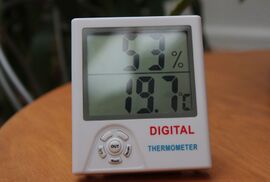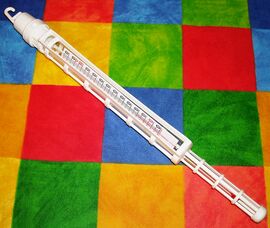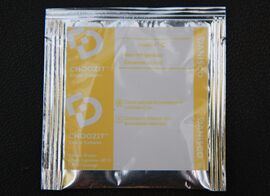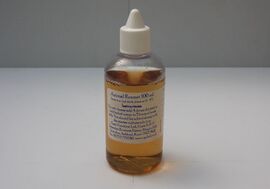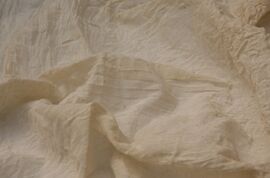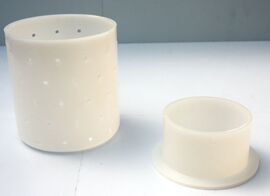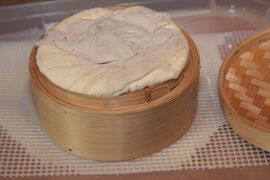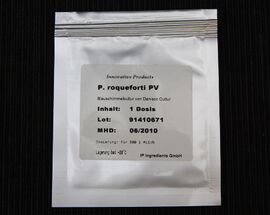Category: Cheese making: Difference between revisions
No edit summary |
No edit summary |
||
| Line 32: | Line 32: | ||
** Something I always seem to forget: When using [[Penicillium Roquefortii]] for blue cheeses or [[Penicillium Candidum]] for white-mould bloomy-rinded cheeses, the freeze dried powder needs to be rehydrated for 24 hours before you can start actually making the cheese. | ** Something I always seem to forget: When using [[Penicillium Roquefortii]] for blue cheeses or [[Penicillium Candidum]] for white-mould bloomy-rinded cheeses, the freeze dried powder needs to be rehydrated for 24 hours before you can start actually making the cheese. | ||
* '''Maturing your home-made cheese''' | * '''Maturing your home-made cheese''' | ||
** | ** Unless you have a cave handy, the [[fridge]] is probably the best place to mature your [[home-made cheese]] although it's really going to be too cold. After discovering the top shelf of my often-opened fridge could be as much as 5° C warmer than the bottom, I've decided to mature my cheeses there. As all fridges differ, check various areas of your fridge with a thermometer to find the area that is around 11°C [51° F], the ideal 'cave' temperature. | ||
===Basic cheese making equipment=== | ===Basic cheese making equipment=== | ||
''The pictures link to enlargements and the text links to more detailed information''' | ''The pictures link to enlargements and the text links to more detailed information''' | ||
Revision as of 18:41, 19 February 2023
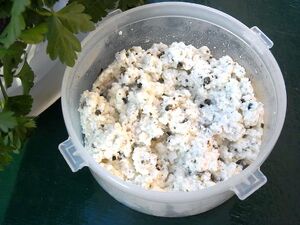
Making cheese at home: Cookipedia's editors have only just started to make cheeses at home so we are by no means experts. However, everything we learn will be documented and if you can improve on any of the articles, then please do.
The basics
Certainly, there a few important basics to take into account when cheese making, most of which can be obtained from our growing list of home dairy suppliers.
- Cleanliness
- After use, rinse everything in cold water, as hot water will harden cheese deposits.
- Then wash in hot soapy water and rinse well.
- If utensils are stored for a while before re-use, wash again before use.
- If you are familiar with wine or beer making, then follow the same procedures when cheese making.
- Boil cheese cloths in water if they have been washed in detergents.
- Avoid making cheese at the same time, or in the same areas, as used for wine and beer making, bread making etc.
- Temperatures
- Stick to temperatures given in recipes. Any slight deviation is likely to result in irreversible changes to your cheese. That's how my cottage cheese turned into mozzarella!
- Humidity
- Humidity is important whilst storing and therefore maturing cheese. For instance, the retail shop in Neals Yard Dairy has a humidifier spraying a fine mist to keep the humidity high. This is not possible at home but a level of humidity can be accomplished using a bowl of water near the cheese. Some fridges also have a system that maintains a constant level of humidity.
- Word of advice
- Having decided to make bread and cheese at the same time, I realised that this is not advisable. According to experts, spores of yeast from bread making can contaminate the cheese during cheese making.
- Advance preparation
- Something I always seem to forget: When using Penicillium Roquefortii for blue cheeses or Penicillium Candidum for white-mould bloomy-rinded cheeses, the freeze dried powder needs to be rehydrated for 24 hours before you can start actually making the cheese.
- Maturing your home-made cheese
- Unless you have a cave handy, the fridge is probably the best place to mature your home-made cheese although it's really going to be too cold. After discovering the top shelf of my often-opened fridge could be as much as 5° C warmer than the bottom, I've decided to mature my cheeses there. As all fridges differ, check various areas of your fridge with a thermometer to find the area that is around 11°C [51° F], the ideal 'cave' temperature.
Basic cheese making equipment
The pictures link to enlargements and the text links to more detailed information'
-
Double boiler being used to make Cheddar cheese
-
Cheese making thermometer (at least 15°C to 50°C)
-
Digital thermometer with humidity reading
-
Cheese making thermometer, designed to float
-
A Chinese steamer makes a good cheese mould
Ascott smallholding supplies is a good place to start for your cheese making equipment and supplies.
- Double boiler vat
- Used to heat the milk without scalding it. Similar to a large Bain marie.
- Dairy thermometer. Should be able to cover 15°C to 50°C - a home-brew thermometer will be fine as long as it's clean!
- Specialised cheese making thermometers are designed to float on the surface of the milk.
- Starter cultures
- Specific cultures are used to produce certain cheese types
- Rennet
- Cheese cloths
- Plastic draining mats
- Use to stand cheese on whilst draining
- Cheese press
- Cheese moulds or forms
- Fungi to give character to certain cheeses
Useful links
Pages in category ‘Cheese making’
The following 24 pages are in this category, out of 24 total.


